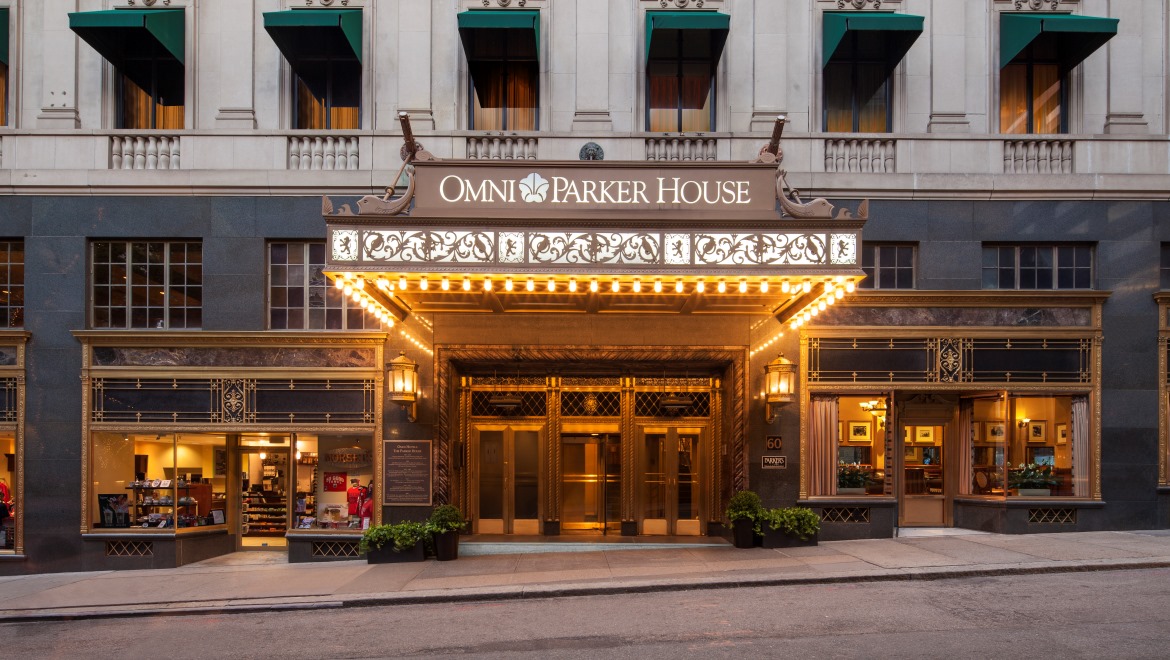How Two Boston Hotels Modernized America
by David Klemt

To understand how far we’re moving forward with hotel design and hospitality we can look at two historic and influential Boston hotels.
In part, this dive into hotel history finds its inspiration from a Time Out list. Recently, the publication revealed their 2022 list of the world’s top cities.
According to Time Out, Boston, the location of two historically significant hotels, is 29th in the world. It’s also one of just six American cities to make the list. For some context, number 28 is Lisbon, Portugal, and number 30 is Mexico City.
Now, it’s impressive for a city to be the home of one influential hotel. That Boston is home to two is extraordinary.
Both hotels trace their openings to 1800s America. One is, to many, the first modern hotel in the US. The other is America’s longest continually operating hotel.
Tremont House
Now, neither of the hotels I’m writing about are the first hotel in America. That honor goes to the City Hotel in New York City.
However, the Tremont House in Boston, which traces its opening to October 16, 1829, delivered many other firsts. Sure, it’s not the first building designed and built to be used as a hotel. But look at the other firsts this historic hotel brings to the table:
- Tremont House is the first hotel in America with a reception area.
- Also, this is the first hotel in the US to employ bellboys.
- Another impressive first for Americans and American hotels? Locking hotel rooms.
- And behind the locking door of that hotel room, free soap.
- Arguably the most important American hotel first ties into the free soap. The Tremont House is the first hotel in America with indoor plumbing.
Sadly, the Tremont House’s history ends just 66 years after first opening its doors. In 1895, the historic hotel was demolished. If you want to visit the site, head to 73 Tremont Street and check out the office building occupying the space.
Omni Parker House
So, the Omni Parker House obviously isn’t the first hotel in the US. And it doesn’t boast the first reception area, locking hotel rooms, or indoor plumbing in an American hotel.
However, this hotel brings with it other firsts. On top of that, the Omni Parker House is still operating today. Seriously—you can book a stay right now.
Another awesome detail of the Omni Parker House? Well, it’s literally across the street from the Tremont House’s former site. So, you can book a stay or pop by for a bite or drink, then walk across the street to stand where America’s first modern hotel once stood.
Also of note, the Omni Parker House opening date. This landmark hotel opened for business on October 8, 1855. So, the same month as the Tremont House, which was across the street, 26 years later. These historic hotels, then, were competing against one another in Boston for 40 years.
Upon opening, the Omni Parker House became the first hotel to separate room rates and fees for meals. Showing how much hotels in Europe influenced American hotel operators as they became more modern, this separation of fees was known as “the European Plan.” Prior to this development, guests paid an all-inclusive rate and had to eat when the hotel made meals available. The Omni Parker House gave more control over if and when guests ordered their meals.
In terms of firsts for Boston, the Omni Parker House has quite an impressive list:
- The first hotel to offer cold and hot running water.
- This is the first Boston hotel to feature an elevator for guests.
- Oh, and this is where the Boston Cream Pie was created.
- And let’s not overlook the Omni Parker House is also the home of the Parker House Roll.
Enduring Legacies
Clearly, the Tremont House’s influence on modern hotel design and amenities is undeniable. Once an afterthought, the lobby is now a prominent space in hotels. To show how far we’re taking the lobby, consider the Hyatt Regency in San Francisco (Time Out 25).
Incredibly, this space measures 42,000 square feet and stands 17 stories tall. Today, modern hotels are crucial design elements.
Indoor plumbing? Hot and cold water and toilets in rooms? We certainly take these design features for granted now.
Today, you can find hotel rooms that feature jetted tubs, steam showers, heated floors, multi-head showers, saunas, and views. And that’s to say nothing of the free soap, now often provided in partnership with the finest skincare companies.
Additionally, consider how we enter our hotel rooms now. One hotel in America had to be the first to feature locking hotel room doors. Now, we can access rooms through apps on our phones. There are also hotels that feature biometric technology. Not only can a guest access their room with this tech, they can complete check-in with biometrics.
When it comes to culinary influence, the Omni Parker House ushered in a new era. The power to order from a menu on your own schedule? It’s almost unbelievable that guests didn’t have that type of control until the mid-1800s.
Per historians, Harvey D. Parker was incredibly particular about his hotel’s culinary program. On average, chefs were paid $418 per year back then ($14,236 today). Parker paid a French chef $5,000 per year ($170,293 today).
We have to look backward to appreciate how far we’ve come. And we must tap into that appreciation to move forward.
Image: Omni Hotels & Resorts
